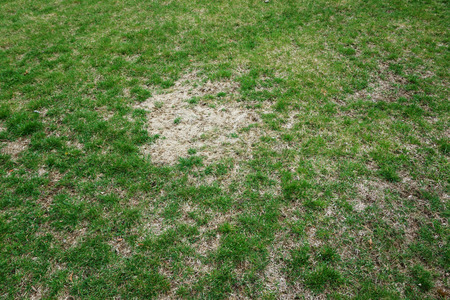 Want to know how to get rid of brown patches on your lawn without much difficulty? Brown patches are caused by a prevalent fungal disease that can affect just about any type of grass. If you or your friends owned a lawn for more than a few years, chances are you probably saw it before. But how can you get rid of these brown patches most efficiently? Are there any simple, clear-cut instructions or tips you can follow?
Want to know how to get rid of brown patches on your lawn without much difficulty? Brown patches are caused by a prevalent fungal disease that can affect just about any type of grass. If you or your friends owned a lawn for more than a few years, chances are you probably saw it before. But how can you get rid of these brown patches most efficiently? Are there any simple, clear-cut instructions or tips you can follow?
- Where to Start – Mow Your Lawn High
It can be tempting to mow your grass short in the summer, since it can grow very fast. However, this practice is usually a problem, because if your grass grows too fast it will grow higher than usual. This, in turn causes another problem: it will be harder for the sunlight to make it to the lower areas of your lawn. As a result, whenever you water your grass, the soil is likely to stay moist longer, making it easy for the fungus that causes brown patches to thrive.
- Water More Sparingly
Watering less will also help, since the fungus is very sensitive to water – it loves it. Watering on schedule, in the morning some time around 6 AM to 7 AM will help you keep your grass healthy. The grass will then keep an ideal temperature, and as long as you only water it once every 3-4 days, it should stay much healthier and less vulnerable when it comes to being prone to brown patches.
- Use the Right Blend of Organic Fertilizer
Do you really want to know how to get rid of brown patches on your lawn before they even appear? Buy a high quality, 100% organic fertilizer, and make sure you use it properly. Making sure you don’t overuse your fertilizer and that you keep nitrogen levels low is an essential prerequisite. Fungus thrives in high nitrogen conditions just as much as your lawn does. As a result, a lower content of nitrogen and the help of a reliable lawn care specialist can really help you out.
- The Use of Preventive Fungicide
There is also special fungicide labeled for brown patch disease, that will help you not only prevent brown patches on your lawn, but also restore the affected lawn to its former glory. In order to gain best results, make sure you apply it according to the label – usually between once every 3 and 4 weeks – and keep using it consistently until you start seeing improvements.
- Prevent Heavy Thatch
Paradoxically, thicker lawn, which is normally supposed to be healthier, is actually a ripe place for brown patches to form. Also, it can sometimes even prevent the soil from absorbing the necessary amount of water that it has to take to the roots, making your grass much weaker and prone to disease. How to combat this problem? Aerate your lawn during the late summer or early fall. The aeration process can help increase the supply of water, oxygen and various nutrients, ensuring that your lawn will be much more resilient.
